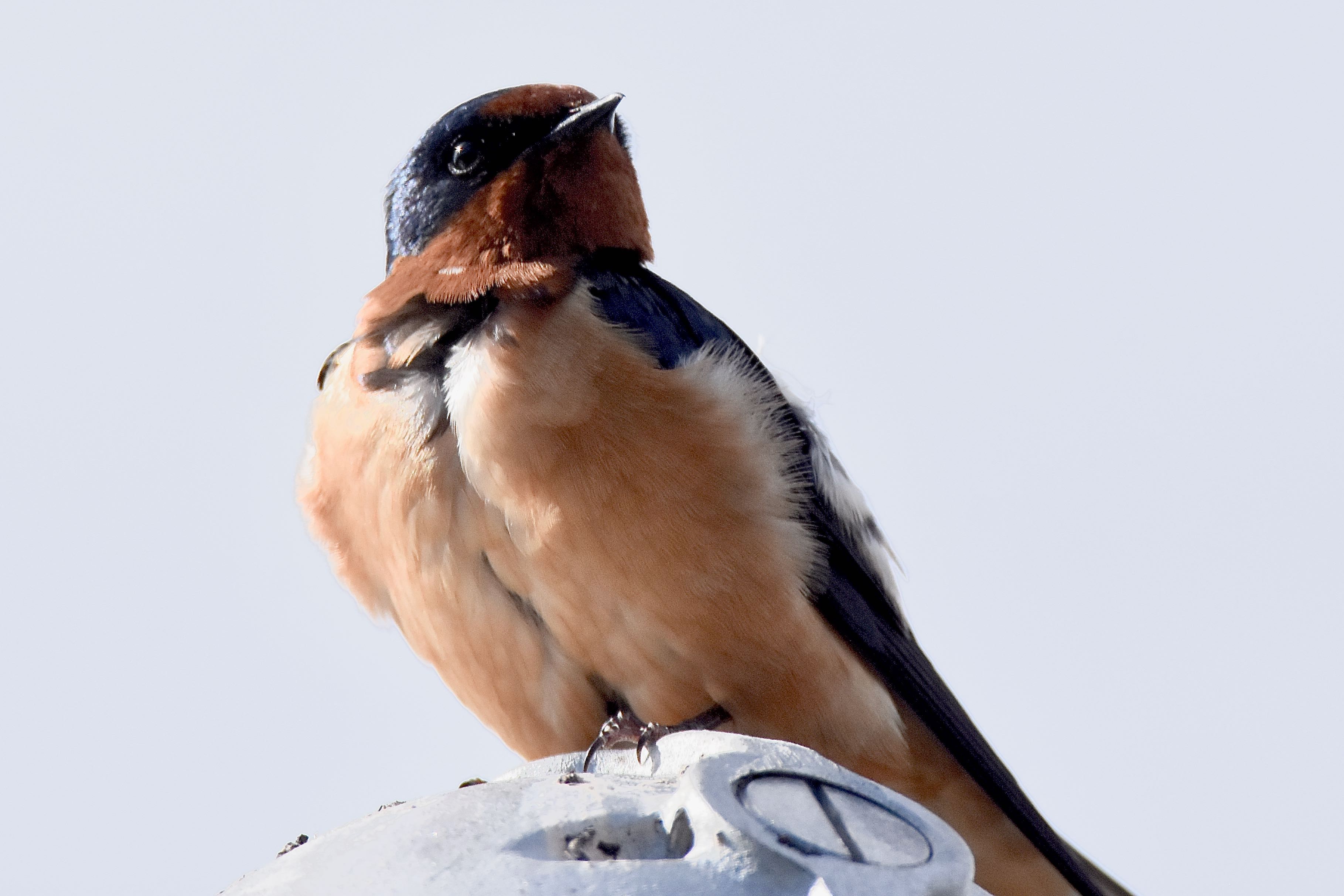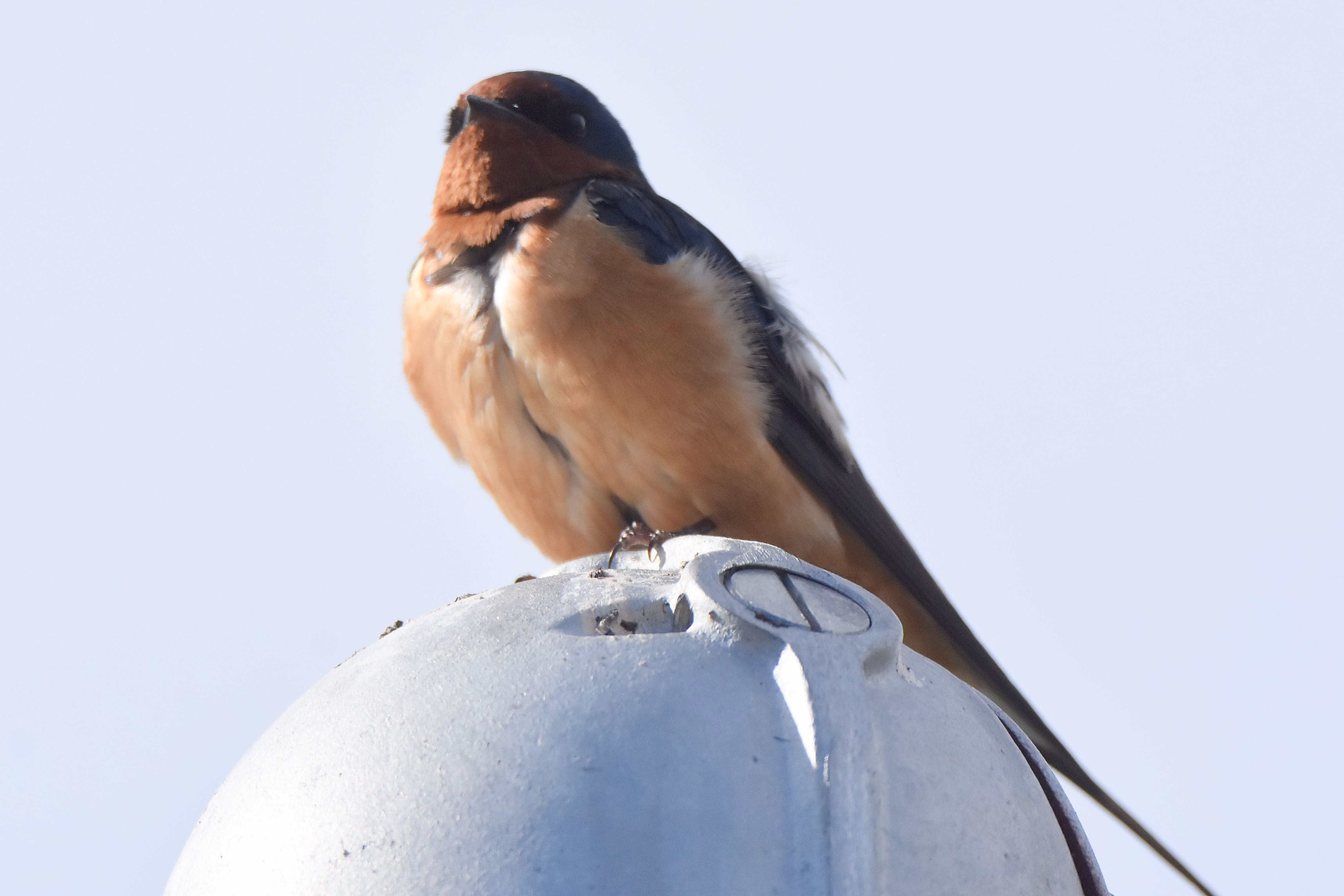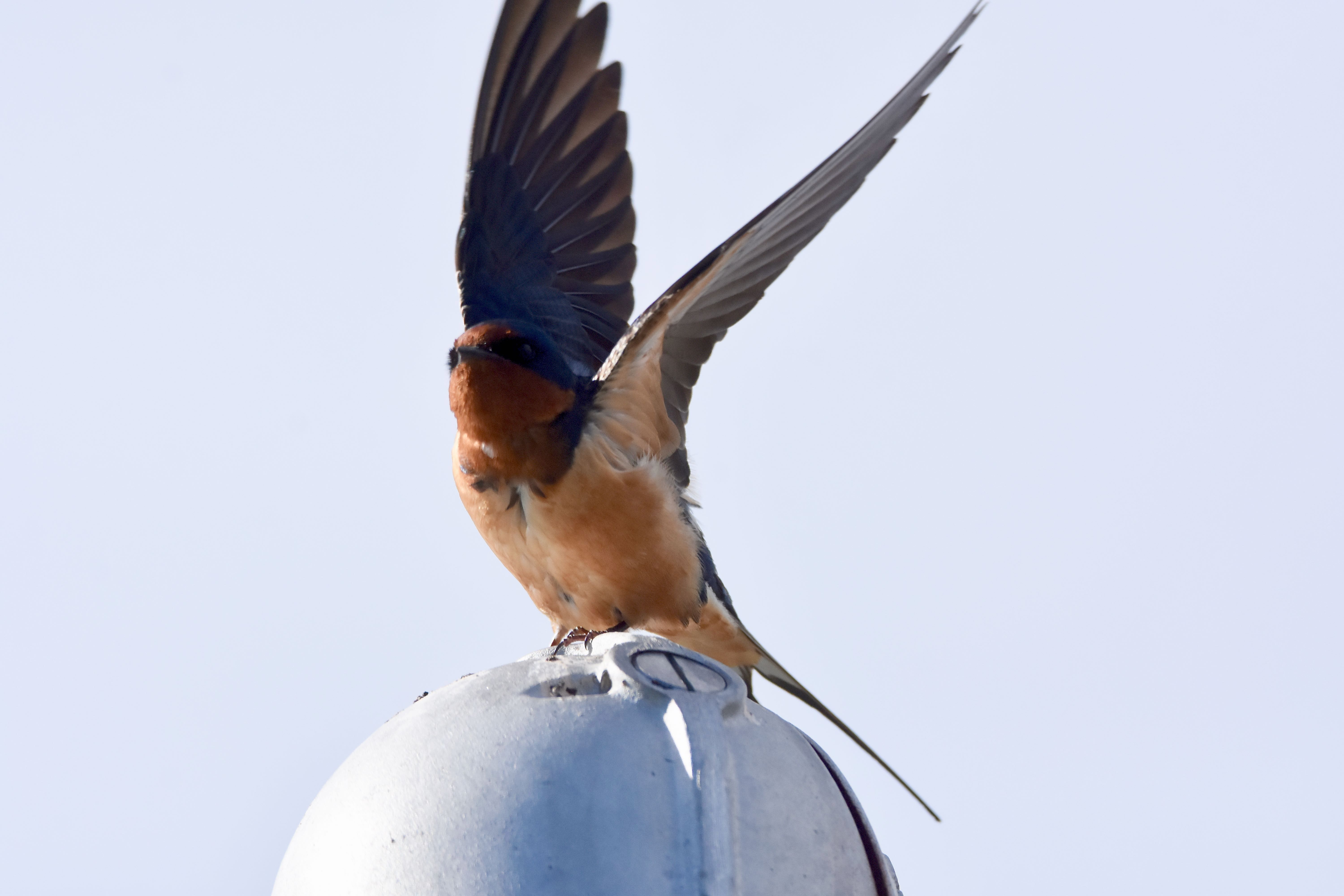
Barn Swallow, photographed at Yellowstone National Park, Wyoming, in June 2017.
The barn swallow, Hirundo rustica, is a bird that’s adapted well to the ways of human beings. Before we dominated the landscape, barn swallows nested in caves and rocky crevices.
Now, it mostly nests on manmade structures — under a bridge, in a culvert, under the eaves of a house, garage or, of course, a barn. It’s actually rare to see barn swallows nesting in a natural setting these days.
They’re the most widely distributed swallow in the world and one of the most widely distributed birds of any kind; they nest over most of North America, Europe and Asia, wintering in South America and south Africa. And they’re seen in migration in places in between.
Odds are that if you see one in South Florida, it’s on his or her way to someplace else, either to nest (in spring) or to spend winter (in fall). They’re more likely to nest in northern Florida, particularly the Panhandle, but there are records of confirmed barn swallow nests as far south as Key West, and a Florida Fish and Wildlife Conservation Commission mapping project done in the late ‘80s and early ‘90s found some evidence of barn swallows nesting in Collier, Lee, Palm Beach, Broward and Miami-Dade counties. Confirmed nests were found in Hendry County as well.
Barn swallow nests in Florida are most likely to be found in culverts and under bridges that span water. It’s the same throughout the Southeast, probably because these places offer some relief from the summer heat, according to the FWC.
The FWC also notes that barn swallows are relatively recent residents of the Sunshine State; the first barn swallow nests were found in Escambia County in the extreme western part of the Panhandle in 1946, coming into the state by way of the Gulf Coast. A second wave of barn swallows entered the state via Georgia in the 1970s.
Barn swallows are medium-sized birds, between six and eight inches long, with wingspans as long as 13 inches. They are a deep, dark blue on the wings, back, head and face about the eyes; below the bill, the face is rust-red, with a rust-red patch above the eyes. The breast is mix of buff and red. The tail has two long streamers that give it a forked appearance. The streamers can be seen clearly in the first two photos below. The bill is flat and triangular.
Barn swallows forage on the wing (in flight), taking an assortment of insects that includes flies, beetles, wasps and ants. They’ll forage on the ground at times, taking spiders and snails as well. They eat some berries and seeds.
The nest is a cup made of mud and grasses, lined with feathers. Clutches are typically four or five eggs incubated by both parents over 13 to 17 days. Both parents feed their offspring, which fledge in 18 to 23 days. Parents are sometimes aided in caring for their young by “helpers,” offspring from a previous brood who attend and feed their younger siblings. Barn swallows can have a second brood per season.
Barn swallows are members of Hirundinidae, the swallow family.



